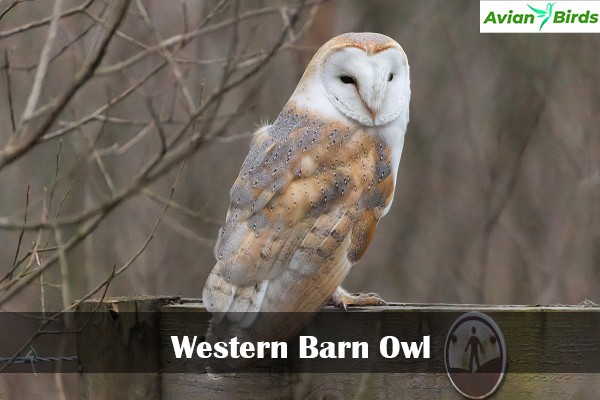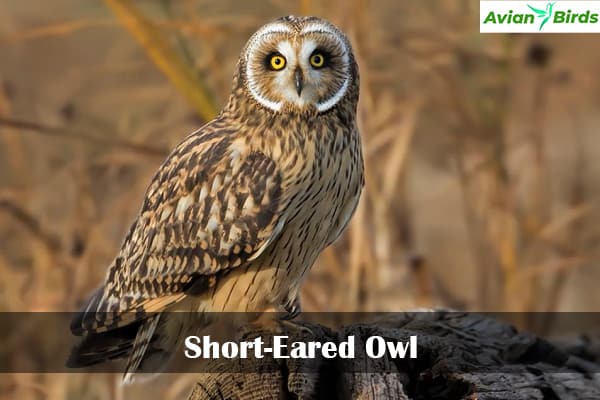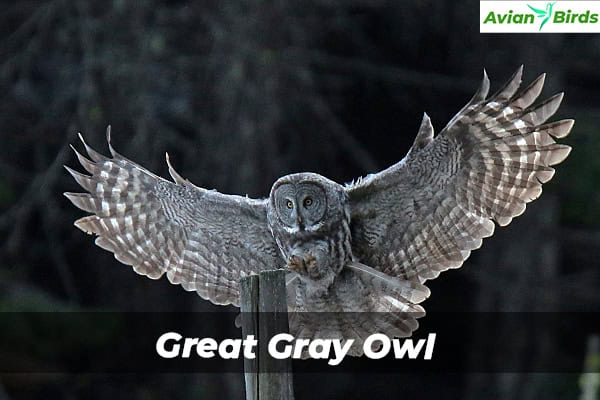9 Most Common Owls Found in Michigan (ID Guide With Pictures)
Michigan is a paradise for Owls lovers, with its mix of forests and wetlands. Owls are a big part of this beauty. They are hard to see but their mystery makes finding them exciting. Let’s explore the 9 most common owls you might see in Michigan.
If you love birds or nature, this guide is for you. It will help you spot Michigan’s owls, from the big Great Horned Owl to the small Northern Saw-whet Owl. Each owl has its own look and way of acting. Join us on a fascinating trip into the world of these amazing birds.
Owls in Michigan
Michigan is a paradise for owl lovers, with 11 different owl species found here. It has the most owl species east of the Mississippi River. This is thanks to its diverse habitats like forests, wetlands, and open areas. These places offer great places for owls to live and hunt.
Tips for Successful Owling
Seeing owls in Michigan can be exciting but requires patience and a sharp eye. These birds blend in well and are mostly active at night. To spot them, learn about Michigan’s owl species, recognize their calls, and respect their space. Keep quiet and avoid bright lights to not scare them away.
1. Great Horned Owl
- Scientific name – Bubo virginianus
- Lifespan – 28 (maximum recorded)
- Size – 17 to 25 in
- Weight – 2.6 to 3.5 lb
- Wingspan – 3 to 5 ft
The great horned owl, also known as the “tiger owl,” is a fascinating bird found in Michigan. It has a tufted head and mottled brown-gray feathers. Its reddish-brown or gray facial disc and white throat patch help identify it. Its feathered legs and feet also make it stand out.

These owls are found all over North America, including parts of Central and South America. In Michigan, they live in many places, like wooded areas and open spaces. You can see them around woodland edges, orchards, farmlands, and even in quiet suburban areas.
Great horned owls make many different sounds, like hoots, screeches, and growls. They eat over 200 types of mammals, 300 birds, and many other animals. They even eat fish and carrion.
But, great horned owls have faced some problems lately. Hunting and harmful pesticides have hurt their numbers. Yet, they are still doing well in Michigan. They are important to the state’s ecosystem.
2. Barn Owl
- Scientific name – Tyto alba
- Lifespan – 2 to 4 years (wild); 25 years (captivity: maximum recorded)
- Size – 13 to15 in
- Weight – 8 to 25 oz
- Wingspan – 31 to 37 in
The barn owl is a unique and captivating bird found in Michigan. Once more common, these birds have become much rarer over time. The last breeding pair in Michigan was seen in 1983, and the last single owl in 2000. Also, This makes them a rare sight in the state.

Barn owls are the most common owl species worldwide. They are medium-sized and known for their heart-shaped face and pale, speckled feathers. Their body is rusty-brown on top with dark patches, and their face and belly are cream to white.
Also, These owls are mostly active at night. They eat small rodents, insects, lizards, amphibians, bats, and birds. They have a fast metabolism and a high heart rate, which helps them stay energetic at night.
The decline of barn owls in Michigan is due to habitat loss, vehicle collisions, and pesticide poisoning. Despite these issues, efforts are being made to help them. Groups like the Blandford Nature Center are rehabilitating injured barn owls and releasing them back into the wild.
3. Long-Eared Owl
- Scientific name – Asio otus
- Lifespan – 12 years (maximum recorded)
- Size – 14 to 16 in
- Weight – 7.8 to 5.3 oz
- Wingspan – 35 to 39 in
The long-eared owl is a fascinating bird found in Michigan. It gets its name from its big ear tufts that stand straight up. These owls have a mix of brown, grey, and buff feathers with dark brown streaks and buff underparts. This color helps them blend in with their forest homes.

Long-eared owls are found all over Michigan but can be hard to see. They like forests and woodlands near open areas like grasslands and shrublands. They also visit farmlands, orchards, parks, cemeteries, and gardens. In Michigan, they’re more common in the north during summer but can stay in the south and center all year.
These owls are shy and hard to spot. You might hear their calls more than see them. The male’s deep song and the female’s high-pitched whistle can hint at their presence, even if you don’t see them.
Long-eared owls are great hunters with sharp hearing and silent flight skills. They eat their prey whole and later spit out the parts they can’t digest. These owls help keep small mammals like voles, mice, and shrews in check.
If you see a long-eared owl in Michigan, you’re really lucky. These rare birds are a true gem. Their existence shows how rich Michigan’s nature is.
4. Short-Eared Owl
- Scientific name – Asio flammeus
- Lifespan – 4 years
- Size – 13 to 17 in
- Weight – 7.3 to 16.8 oz
- Wingspan – 33 to 40 in
The short-eared owl is a medium-sized bird that lives in Michigan’s grasslands and wetlands. It has a rounded head, small ear tufts, and mottled brown, buff, and white feathers. These owls like large, open areas with little vegetation. They build their nests on the ground, hidden in low plants.

In Michigan, you can find short-eared owls in the north during spring and summer. They move to other parts of the state in winter. They are known for their unique flight and raspy bark call. They mainly eat rodents, birds, and their young.
Helping the short-eared owl is important because it’s endangered in Michigan. We need to keep big areas of grassland and wetland safe. Things like controlled burns and mowing help these owls live in Michigan.
5. Northern Saw-Whet Owl
- Scientific name – Aegolius acadicus
- Lifespan – 7 years (wild); 16 years (captivity)
- Size – 7 to 9 in
- Weight – 2.2 to 5.4 oz
- Wingspan – 17 to 22 in
The northern saw-whet owl is a small and cute owl found in Michigan. It has a round head and rich brown feathers with white spots and streaks. These owls live in coniferous forests, making their homes in tree hollows or old nests.

During winter, they move to deciduous or mixed woodlands. In Michigan, they stay all year, especially in the north. They are hard to see because they are active at night and have great hearing. Their call sounds like a saw being sharpened, which is very unique.
These owls are common in the U.S. during winter and live in northern North America. They are mostly active at night and like to hide in dense plants near evergreen trees. Young owls have a cinnamon belly and no head or back spots. Adults have a pale face with white streaks and yellow eyes.
6. Barred Owl
- Scientific name – Strix varia
- Lifespan – 24 years (oldest recorded)
- Size – 16 to 25 in
- Weight – 17 to 35 oz
- Wingspan – 38 to 49 in
The barred owl is a big, dull-colored owl with a unique barred pattern on its feathers. It’s the second most seen owl in Michigan, after the great horned owl. They have round heads, light facial disks, and close dark eyes. This makes them stand out from other owls.

Distinguishing Features and Behavior of the Barred Owl
Barred owls are brown on top with cream-white bars and pale below with a scalloped mantle and brown streaks. Their big, round heads and pale facial disks with faint markings are easy to spot. They are known for their unique hooting call, often heard as “Who cooks for you? Who cooks for you all?”
These owls are mostly active at night but can be seen in the early morning and evening. They like to sit quietly in the trees during the day, hiding from view. Barred owls eat a variety of things, including small mammals, amphibians, and fish.
Habitat and Distribution in Michigan
The barred owl lives in Michigan all year, but not in the Upper Peninsula’s deep forests. They prefer mixed woodlands. You can see them in suburban areas, nature preserves, and other wooded places. They live in pairs, keeping strong bonds and territories all year.
Other Owls Found in Michigan
Michigan is home to many owl species, not just the 11 most common ones. You might also see snowy owls, great gray owls, northern hawk owls, and boreal owls. These owls come from Canada and visit Michigan in the winter.
The snowy owl and great gray owl sometimes visit Michigan, mostly in the Upper Peninsula. The northern hawk owl is rare and hard to find, but it’s worth looking for. It has a unique look and is found in the eastern and central Upper Peninsula. The boreal owl is very rare in Michigan, with most sightings in the Upper Peninsula.
If you’re into bird watching or nature, spotting these rare owls is an amazing experience. Seeing them in the wild is a special treat. Whether you’re an owl expert or just love nature, keep an eye out for these unique birds in Michigan.
7. Eastern Screech Owl
- Scientific name – Megascops asio
- Lifespan – 14 years (oldest recorded)
- Size – 6.5 to 10 in
- Weight – 4 to 8 oz
- Wingspan – 18 to 24 in
The eastern screech owl is a small, chunky bird of prey with wide wings and a short tail. It has a cool, patterned appearance with stripes on its belly. There are two main color types: gray and rusty-brown. In Michigan, you’re more likely to see the gray version. This owl has a big head with little ear tufts, bright yellow eyes, and a yellowish beak. Its legs are covered in feathers, and it has strong feet.

Eastern screech owls like to live in forests, parks, gardens, and even in cities and suburbs. In Michigan, you can see them all year round. They are used to living near people and often make their homes in neighborhood trees, tree cavities, or birdhouses. If you listen carefully at night, you might hear their whining calls. During the day, you can spot them resting in shrubs or in the thick parts of trees close to the trunk.
8. Snowy Owl
- Scientific name – Bubo scandiacus
- Lifespan – 10 (average) 23 years (oldest recorded)
- Size – 20 to 28 in
- Weight – 56 to104 oz
- Wingspan – 50 to 57 in
The snowy owl is one of the easiest owls to recognize because of its bright white feathers and yellow eyes. Even though its feathers are mostly white, they have dark spots on the back. Female snowy owls have more spots and some light brown stripes. They also have small heads, short ear-tufts, and long feathers, which help them blend in with the snowy Arctic landscape, making them look like a snow-covered lump.

Snowy owls live in the Arctic tundra, a cold and treeless area. They build their nests in shallow depressions on the ground, often on raised spots like hills or ridges. Snowy owls don’t have a fixed migration pattern and can travel far distances. In some winters, they move south, so you might see them in places like Michigan, where they can be found in meadows, prairies, grasslands, lakeshores, and even on golf courses or airport fields.
Unlike many other owls, snowy owls make a barking sound rather than the usual hooting. Their main call is a rough “kru kru kru” sound. They also make other noises like clucking, squealing, grunting, hissing, and cackling.
Owls Found in Other Different Regions
9. Great Gray Owl
- Scientific name – Strix nebulosa
- Lifespan – 18 years
- Size – 24 to 33 in
- Weight – 25 to 60 oz
- Wingspan – 54 to 60 in
The great gray owl is the largest owl in the world by length and has a very unique appearance. Its feathers are gray on the top with lighter bars and pale on the bottom with dark streaks. Also, It has a big, rounded head with a gray face and bright yellow eyes surrounded by dark circles.

Great gray owls live in dense forests and mixed woodlands and hunt in nearby open areas. Instead of building their own nests, they use old nests left by other birds. Their most common call is a deep “whoo,” but they can also hiss and chatter. If you’re lucky, you might see a great gray owl in the far north of Michigan’s Upper Peninsula, but they’re hard to spot.
Great gray owls have amazing hearing and hunt at night from a perch, like a tree or a post. Also, They can swoop down with great strength and even dive through snow to catch their prey, which is mostly rodents.
Moreover, their biggest threat comes from habitat destruction caused by logging, which affects where they can nest, rest, and hunt. They are also at risk from poison used to control rodents, collisions with cars, and diseases like West Nile Virus.
Best Locations for Owl Watching in Michigan
The Upper Peninsula is a top spot for seeing owls in Michigan. Places like Whitefish Point Bird Observatory and Seney Wildlife Refuge are great for watching owls. Michigan’s mix of forests, wetlands, and open areas is perfect for many owl species. This makes Michigan a top choice for owl sightings.
Final Thoughts
Michigan is a top spot for owls in Michigan, with 11 species found here. This makes it the state with the most owl diversity east of the Mississippi River. You can see everything from the big great horned owl to the tiny northern saw-whet owl. These birds are a big draw for nature lovers and birdwatchers.
Some owls, like the great horned and barred owls, are common and found all over Michigan. But others, like the snowy owl and boreal owl, are harder to find. They visit Michigan less often.
The best places to see owls in Michigan are in the Upper Peninsula and in suburban and rural areas. Learning about the different owls and where they live can help you spot them. This makes owl-watching in Michigan more exciting.
Whether you’re an expert birder or just love nature, exploring Michigan’s owls is an adventure you won’t forget. It’s a chance to connect with nature and see some amazing birds up close.







